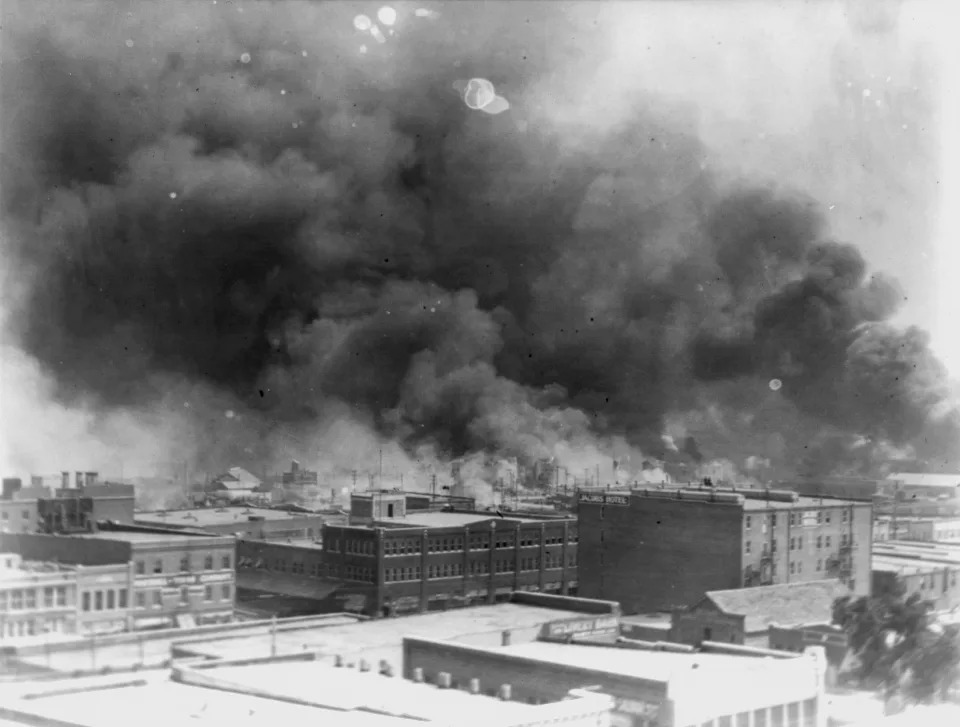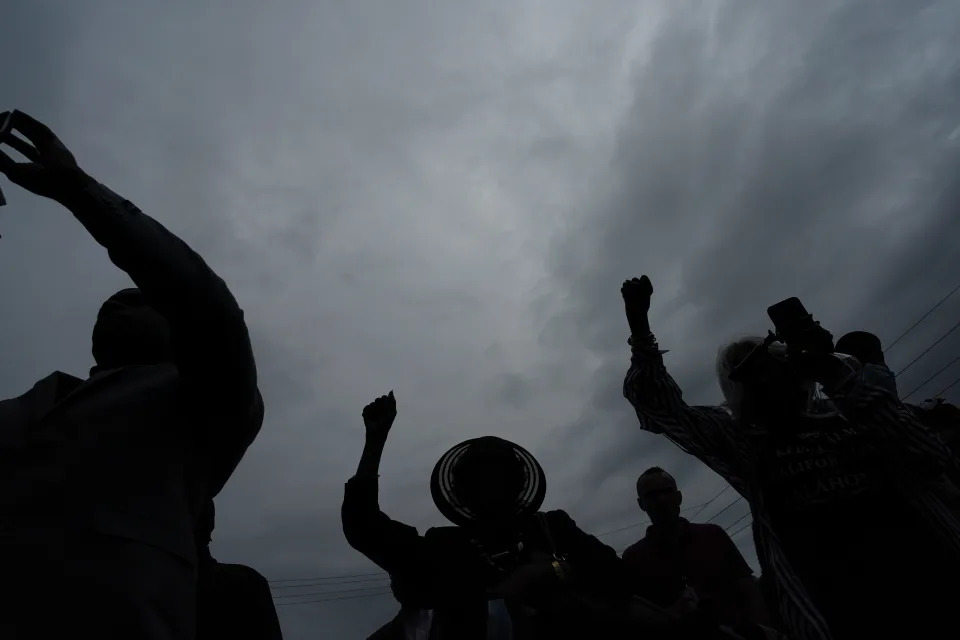Scroby Sands: Investigation into wind turbine fire 'may take weeks'
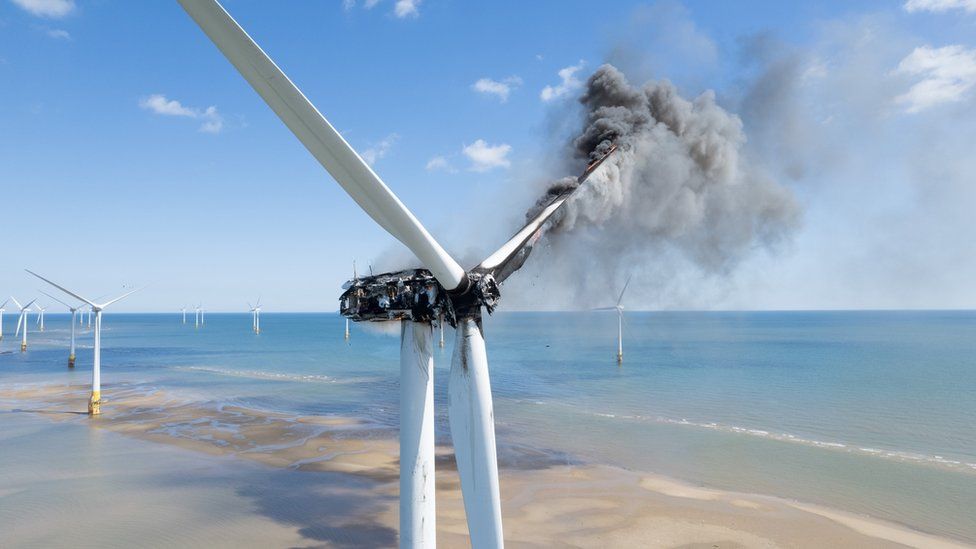
The turbine is part of the Scroby Sands offshore wind farm
By Andy Trigg
BBC News, Norfolk
It could take weeks to determine the cause of a fire on an offshore wind turbine, its owner has said.
The blaze at the Scroby Sands wind farm 1.5 miles (2.5km) off the coast of Great Yarmouth, Norfolk started on Tuesday morning and self extinguished hours later.
RWE, the German company that owns the site, said a team had already started removing fire debris at low tide.
The majority of turbines at the wind farm are back in operation.
"I can only think of two similar fires across the UK in the past.
"When something like this happens, you can only watch as the fire burns out."

The fire could be seen by people on the beach at Hemsby
RWE confirmed on Tuesday that no-one was working on the turbine at the time and that all personnel at the site had been accounted for following an evacuation.
It said the majority of damage was caused to the nacelle - the enclosure at the top of the tower which housed the generating components - and that it may take weeks to determine the cause of the blaze.
Investigators could not assess the damage until it was safe to do so, the company added.
"An electrical fault is the most likely cause," Mr Smith added. "There's a lot of electrical components in those things and electrical items are the most likely things to generate heat."
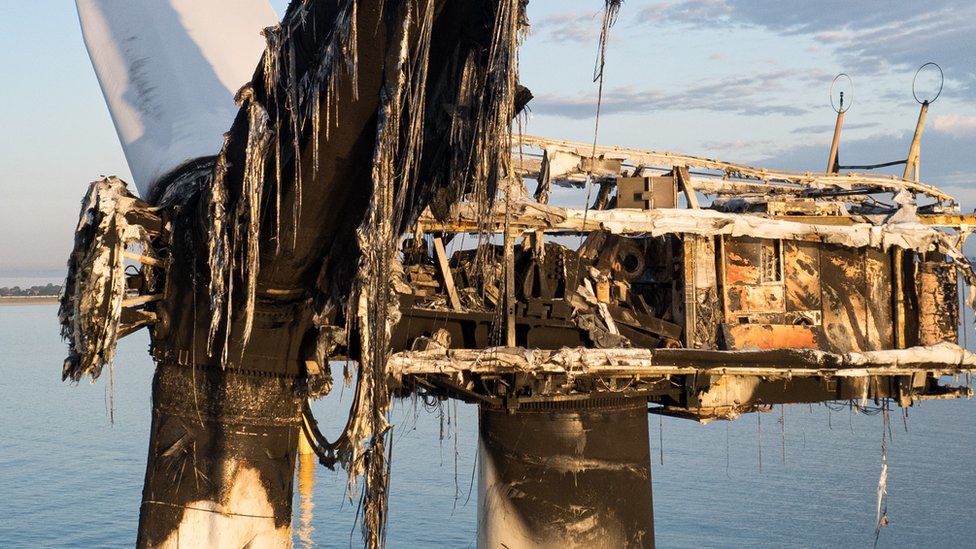 ,
,The majority of the damage was caused to the nacelle - the enclosure at the top of the tower which houses the generating components
RWE said the wind farm was now operational but that six turbines - connected to the damaged one via an electrical cable - would remain out of action until next week.
Ana Musat, executive director of policy and engagement at RenewableUK, said: "There's a lot of work that goes in on a regular basis to stress test the equipment and ensure that we install really good quality components.
"So, of course, everyone is working really hard to ensure that we have as few incidents like this as possible and that we can learn any lessons from this particular one."
The Maritime and Coastguard Agency (MCA) also said it was liaising with RWE, the local authority and environmental stakeholders, to ensure an appropriate clean-up operation was carried out.
It added that a local navigation warning had also been issued to keep vessels away from the affected area.
RWE said its 30 turbines at Scroby Sands had an installed capacity of 60 megawatts and was able to power more than 48,000 households.
Published
1 day ago
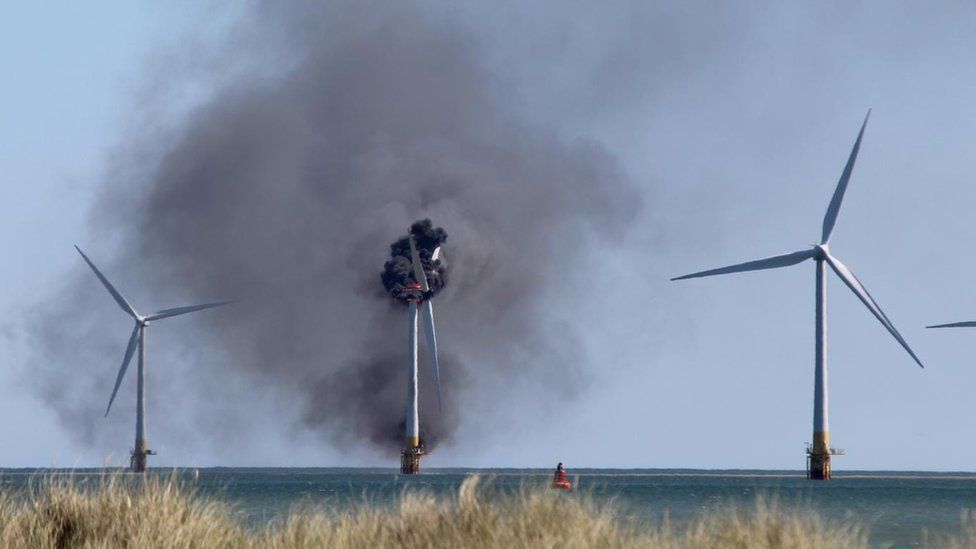
The turbine is part of the Scroby Sands offshore wind farm
By Andy Trigg
BBC News, Norfolk
A fire on an offshore wind turbine has self extinguished, its owner has said.
A plume of black smoke was seen billowing from the Scroby Sands wind farm, 1.5 miles (2.5km) off the coast of Great Yarmouth, Norfolk.
HM Coastguard said the alarm was raised at 10:50 BST on Tuesday and that all personnel had been accounted for following an evacuation.
RWE, the German company that owns the wind farm, said no-one was on board the turbine when the fire broke out.
The company hoped to have the wind farm back operational on Wednesday.
A spokesperson for RWE said: "An incident occurred which led to a fire in the turbine nacelle - the enclosure at the top of the tower which houses the generating components.
"Emergency services were contacted immediately and the Coastguard made aware. They are monitoring the area and advising on a potential 500 metre restriction zone being enforced around the affected turbine
"We would ask people to keep away from the area as assessments are ongoing."
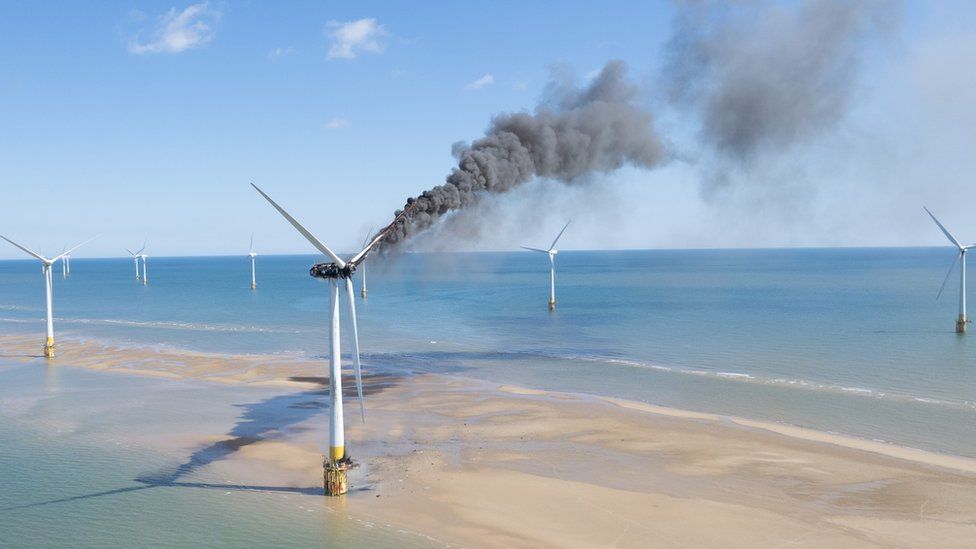
The Scroby Sands wind farm was commissioned in 2004
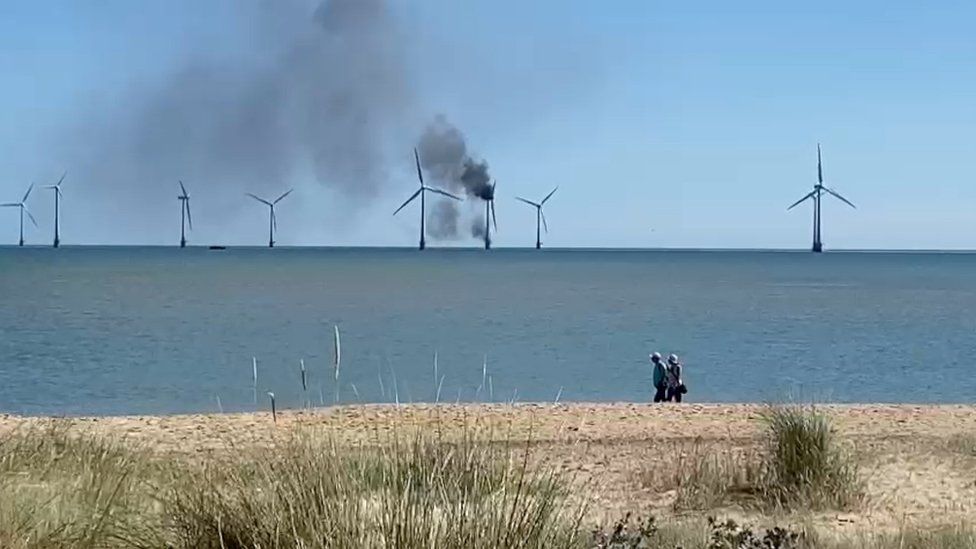
RWE said its 30 turbines had an installed capacity of 60 megawatts and was able to power more than 48,000 households.



